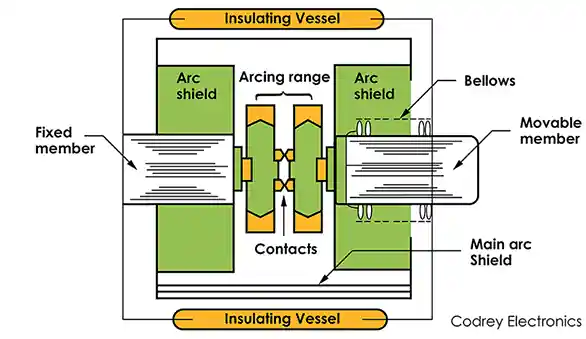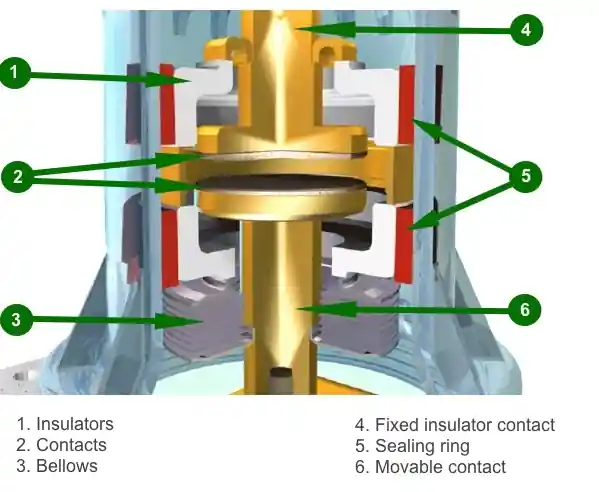Introduction to Vacuum Breakers A vacuum breaker is an essential type of circuit breaker that interrupts current flow in high-voltage electrical systems using vacuum as the arc-extinguishing medium. Unlike air or gas-insulated alternatives, a vacuum interrupter extinguishes the arc in a near-perfect vacuum environment, making it highly efficient, reliable, and safe for medium-voltage applications.

How Vacuum Breakers Work The core mechanism of a vacuum breaker lies in its vacuum interrupter chamber. Here’s how it functions:
- Contact Separation: When a fault is detected, the breaker mechanism forces the contacts apart inside a sealed vacuum chamber.
- Arc Formation: As the contacts separate, an arc forms due to ionization of metal vapors.
- Arc Extinction: In the vacuum, there are no gas molecules to sustain the arc. The arc is rapidly extinguished, usually within half a cycle of the AC waveform.
- Dielectric Recovery: The vacuum allows for very fast dielectric recovery, making the system ready for operation quickly.

Applications of Vacuum Breakers Vacuum circuit breakers are typically used in:
- Medium-voltage switchgear (1 kV to 38 kV)
- Power distribution systems in industrial plants
- Substations in utility grids
- Mining and marine applications
- Renewable energy systems
Their compact size, minimal maintenance, and long life make them ideal for mission-critical operations.
 breaker guide installed in industrial switchgear panel” class=”wp-image-1284″/>
breaker guide installed in industrial switchgear panel” class=”wp-image-1284″/>Market Trends and Industry Adoption Nach Angaben von IEEE und IEEMA, vacuum breaker technology has become the dominant standard for medium-voltage systems worldwide. The market is seeing:
- Increased demand from smart grid expansion
- Rising installation in renewable energy plants
- Replacement of aging SF6-based breakers for environmental compliance
Manufacturers like ABB, Schneider Electricund Siemens have continued to innovate in contact material, actuator design, and digital integration.
Technical Parameters and Comparison
| Merkmal | Vacuum Breaker | SF6 Breaker |
|---|---|---|
| Arc Quenching Medium | Vacuum | Sulfur Hexafluoride (SF6) |
| Dielectric Recovery Time | Very Fast | Moderate |
| Environmental Impact | None | High (greenhouse gas) |
| Maintenance Requirements | Low | Moderate to High |
| Typical Application Voltage | 1 kV to 38 kV | 72.5 kV and above |
Advantages Over Traditional Breakers
- No gas refilling required
- Long mechanical life (~10,000 operations or more)
- Fast arc extinction and low energy loss
- Compact and modular design
These benefits have made vacuum breakers increasingly preferred in urban and industrial electrical networks.
Buying Guide and Selection Tips When selecting a vacuum breaker:
- Match voltage and current rating to your system
- Choose between fixed or withdrawable types depending on maintenance needs
- Prefer models with digital diagnostics for smart grid compatibility
- Ensure compliance with IEC 62271 or ANSI/IEEE C37.04 standards

FAQ Section
A vacuum provides excellent insulation and arc-extinction capability without introducing harmful gases, making the breaker more eco-friendly and efficient.
Generally, vacuum breakers are used in medium-voltage systems. For higher voltages, SF6 or air-insulated breakers are more common.
They require minimal maintenance, often after 10,000 operations or more, making them ideal for demanding environments.